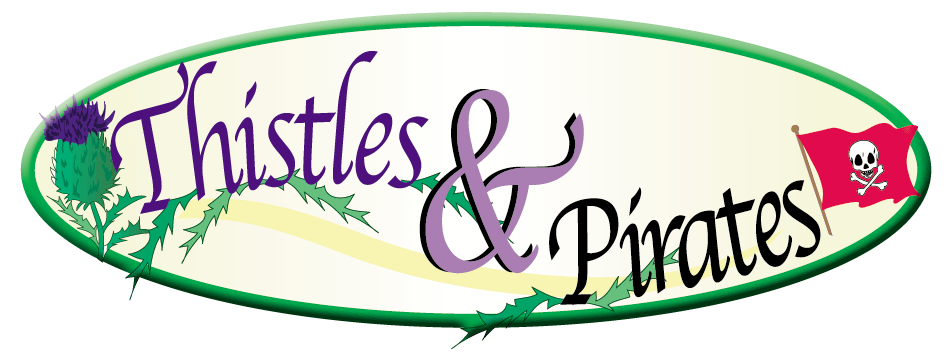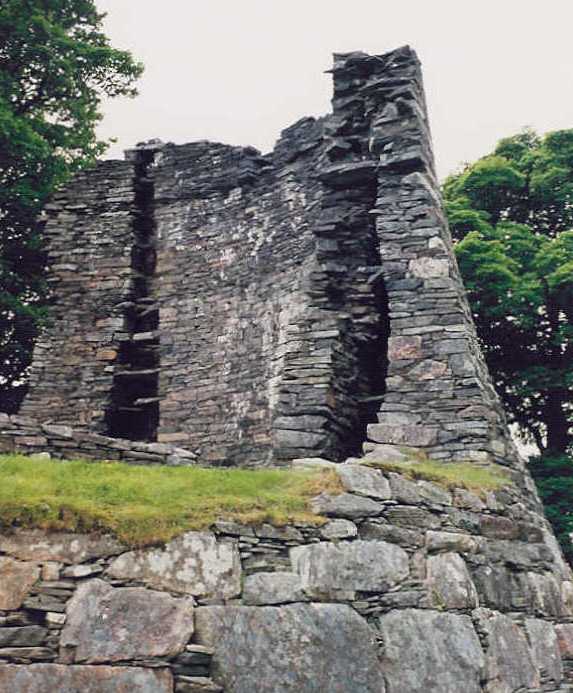 |
After rescuing Duncan Cameron from
caterans, Thistle takes refuge beneath a broch.
Brochs, found only in Scotland, are round drystone
towers built during the Iron Age. Access is through a
narrow passageway. The tower consists of two tapering
concave walls with passageways to upper galleries. The
smaller spaces between the two walls may have helped
to keep the broch cool in the summer and warm in the
winter. The true purpose of the broch is unknown, but
they could have been fortified houses lived in year
round, rather than a place where the folk sought
sanctuary when sea raiders came. Dun Telve, a
broch in Glenelg, is one of the best preserved brochs
in Scotland.
|
|
|
|
|
|
|
Near Castle Urquhart, which overlooks
Loch Ness, Duncan encounters the fairy queen who
grants his wish.
Built by John Grant of Freuchie, the castle was blown
up in 1692 to prevent the Jacobites from seizing it.
The lucky visitor might catch a glimpse of the elusive
Nessie, who dwells within the murky depths of Loch
Ness.
|
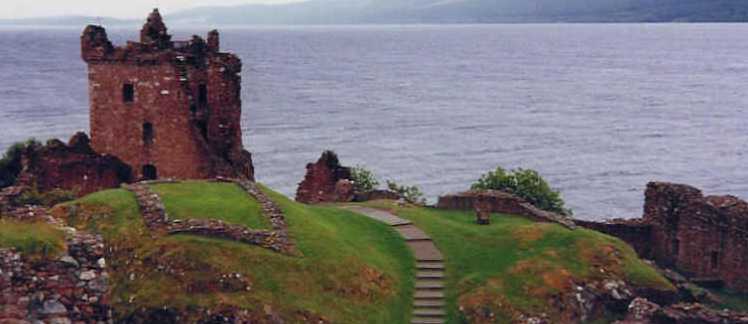 |
|
|
|
|
|
|
 |
Duncan's cottage, where his grandmother lives, is
modeled after a white-washed thatched cottage at
Auchindrain Open Air Museum.
|
|
|
|
|
|
|
Duncan and Rory sleep in a box-bed while
at his cottage. This particular box-bed can be seen at
the Highland Folk Museum in Kingussie. When Brandubh
comes to live with Rory and Duncan, he sleeps in a
cradle similar to the one in front of the box-bed.
|
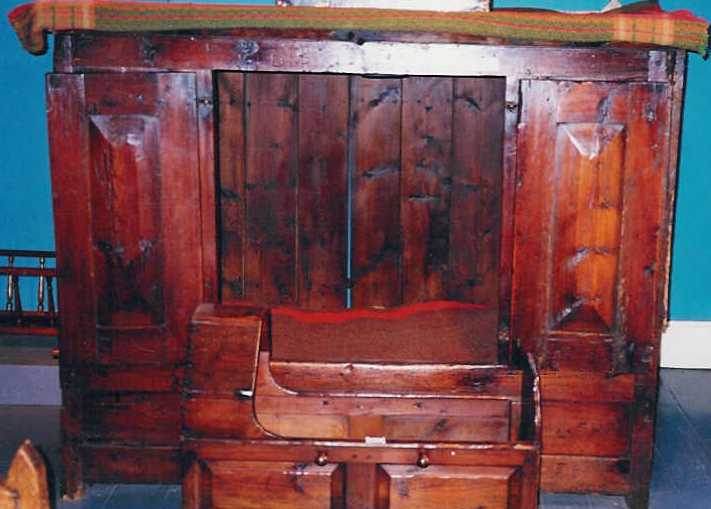 |
|
|
|
|
|
|
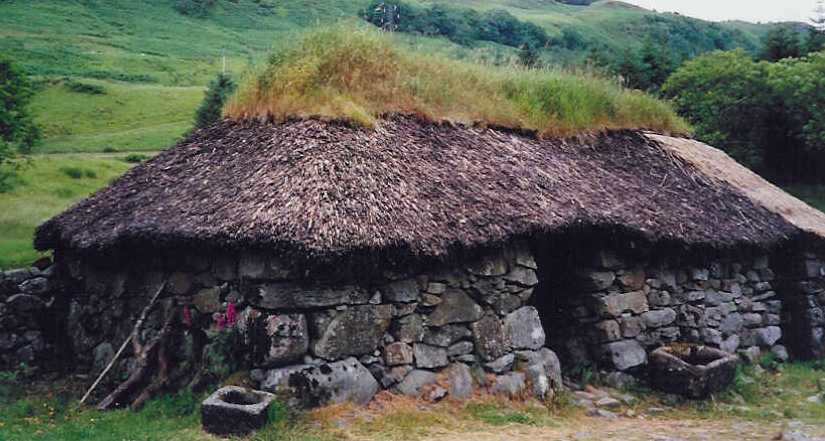 |
This cottage, which can be seen at Auchindran Township
Open Air Museum, is reminiscent of the house Red Padraig
and Morna occupy. |
|
|
|
|
|
|
Duncan uses a cas chrom to turn the soil prior
to planting seed during their stay in the MacOnie
village. The words mean crooked foot.
This primitive plow, owned by the Highland Folk
Museum in Kingussie, was ideal for use in Highland
terrain. |
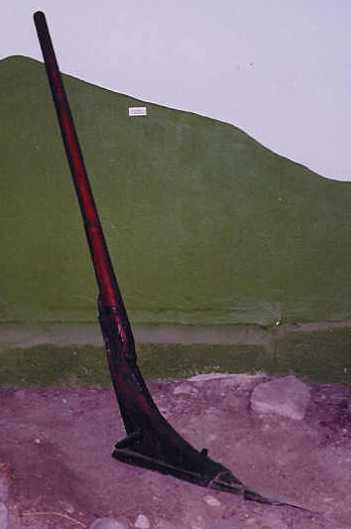 |
|
|
|
|
|
|
 |
After Rory's duel with Cathal, Duncan takes her to the
Falls of Caig (Eas Chia-aig) near
Achnacarry. |
|
|
|
|
|
|
Those Highland clans that supported Prince Charles
gathered at Glenfinnan on the shore of Loch Shiel. A
descendant of one of the prince's first supporters,
Macdonald of Glenaladale, erected the monument in 1815.
A Highlander, sculpted by John Greenshields, stands atop
the monument. |
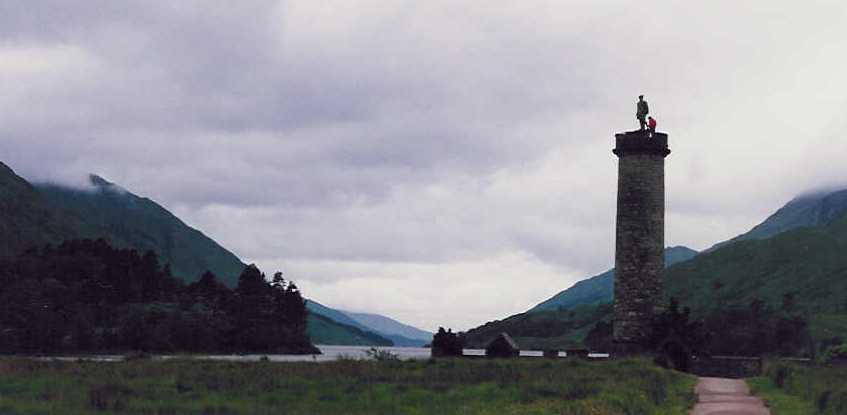
|
|
|
|
|
|
|
 |
Ruthven Barracks, near Kingussie,
is the scene of Duncan's first battle.
Initially built in 1718, General Wade enlarged the
barracks while he built roads through the Highlands in
an attempt to subdue the Highlanders. When attacked by
the Camerons in 1745, a sergeant and fourteen men
prevented the Jacobites from seizing control. After
Culloden, remnants of the Jacobite Army gathered at
Ruthven Barracks to rally for the prince. When word came
to seek their safety, they blew up the outpost then
disappeared into Highland fastnesses. |
|
|
|
|
|
|
After the Jacobite Army arrived in Edinburgh, Duncan and
Fergus walked up the High Street to Mercat Cross to hear
the royal proclamation declaring James, King of
Scotland, and his son, Regent.
Most towns had a cross to mark the place where trade was
conducted, proclamations were announced, and punishments
were carried out. The original Mercat Cross was
demolished in 1756. This one was erected in 1910. |
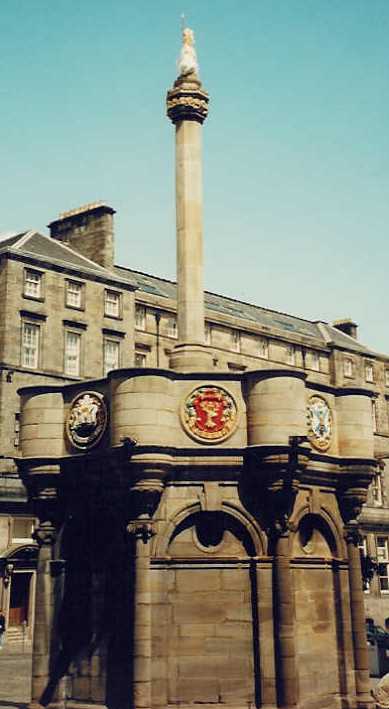 |
|
|
|
|
|
|
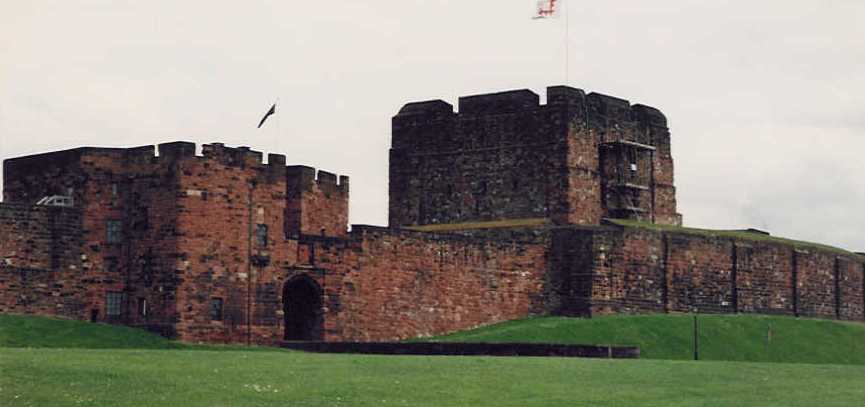 |
During the siege of Carlisle
Castle, Duncan and Fergus spend six frigid and snowy
days digging trenches outside the walled English city
before Carlisle surrenders to Prince Charles. From there
the army proceeds to Derby before retreating into
Scotland. When he retakes the city for his father, King
George II, the Duke of Cumberland captures and executes
many Jacobites left behind to guard the castle.
Scots occupied the border stronghold several times
during its long history beginning in the twelfth
century, although the Romans were the first to erect a
garrison here. Its most famous prisoner was Mary Queen
of Scots. |
|
|
|
|
|
|
After the Battle of Falkirk Muir, the Jacobites take
possession of Doune Castle and use it as a prison.
Gregor MacGregor of Glen Gyle, nephew of Rob Roy
MacGregor, serves as governor.
Two prisoners gained fame in later years. John Home, who
became an author and playwright, escaped by knotting bed
sheets together and climbing down the wall. John
Witherspoon, who emigrated to America, signed the
Declaration of Independence. Although built toward the
end of the fourteenth century, Doune Castle didn't
become a royal castle until James I's reign. |
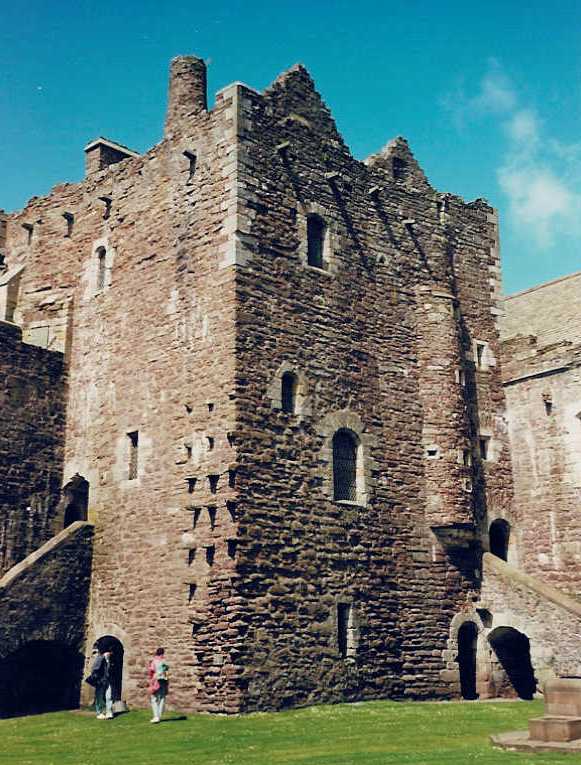 |
|
|
|
|
|
|
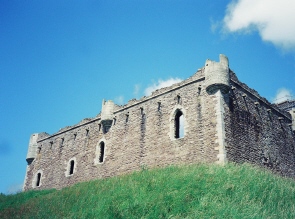 |
The south range of Doune Castle was never
completed. The curtain wall showed the room along it
was to have four windows.
|
|
|
|
|
|
|
During Duncan and Fergus's visit to Doune Castle, they
dine with the MacGregors in the Great Hall.
At the east end of the hall, the floor is slightly
raised. This is where the high table would have been.
The door to the left provides access into the lord's
apartments. |
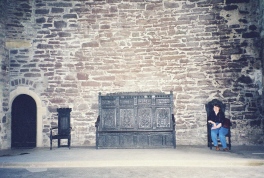 |
|
|
|
|
|
|
|
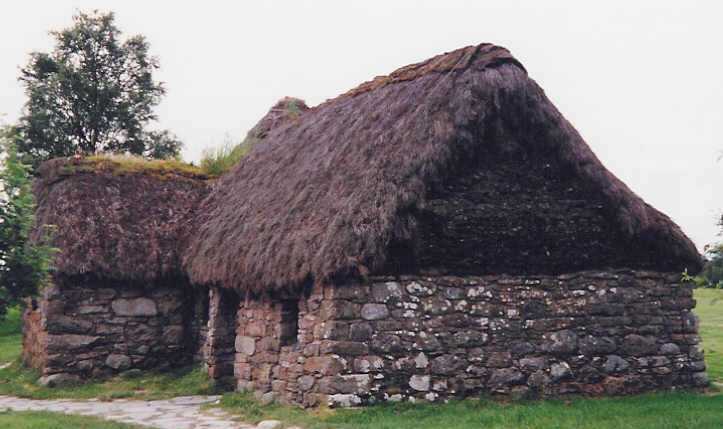
|
After Rory's vision while riding with Duncan and Gregor
Glengyle, they take her to this thatched cottage.
The Old Leanach Cottage, which can be seen at Culloden
Battlefield, is the only remaining structure from that
time period. It stood behind the British lines on 16
April 1746. For a while it served as the Visitor Centre,
but is now furnished as it might have been during The
'Forty-five.
|
|
|
|
|
|
|
Culloden Battlefield. While an exact count of casualties
will never be known, it is estimated as many as 2,000
men died that day. Today, the National Trust for
Scotland maintains the battlefield and is attempting to
restore it to its original appearance. A memorial cairn
to the fallen Highlanders was erected on the battlefield
in 1881. The Battle of Culloden was the last battle
fought on British soil. |
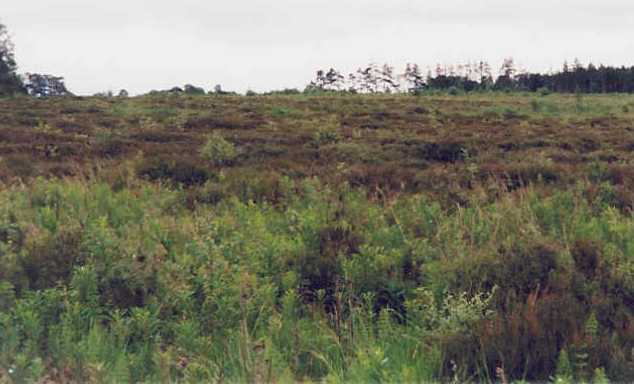
|
|
|
|
|
|
|
 |
Grave markers for the various Highland clans that
participated in The 'Forty-five are scattered around the
battlefield. The clan's standard from Culloden is on
display at the Clan Cameron Museum on the grounds of
Achnacarry. |
|
|
|
|
During a vision, Rory sees the clear water of a spring
turn red with the blood of dying Highlanders.
The body of Alexander MacGillivray, who led the charge
against the British Army, was found here after the
battle. |
 |
|
|
|
|
|
|
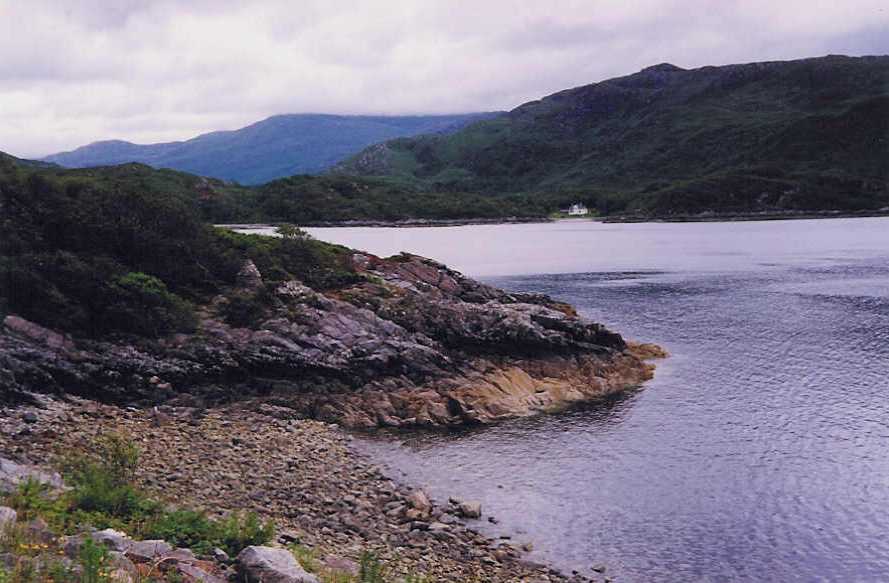 |
Rory brings Prince Charles to the shores of Loch nan
Uamh after he flees Culloden. Rather than escape to
France as planned, he hides on the Isles and in the
Highlands for six months before he finally departs. A
small cairn marks the place where the Rising started and
ended. |
|
|
|
|
|
|
The stone shell is all that remains of the kirk at
Balquhidder where Thistle meets Gregor Glengyle to
rescue Duncan. Rob Roy MacGregor, his wife Helen, and
their sons Coll and Robin Og are buried here. |
 |
|
|
